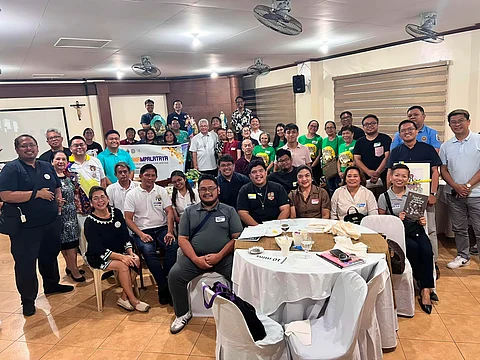
- NEWS
- the EDIT
- COMMENTARY
- BUSINESS
- LIFE
- SHOW
- ACTION
- GLOBAL GOALS
- SNAPS
- DYARYO TIRADA
- MORE

In a province known for many things, both good and not-so-good, a quiet yet resolute movement is breathing life back into the stories, structures, and symbols that have long defined Cavite’s Catholic heritage. The Diocese of Imus has taken a bold step forward on 24 May with the holding of “Pamanampalataya: Master Class in Religious Cultural Heritage” with a mission that is both noble and urgent: to raise a new generation of heritage champions.
Leading this initiative was Father Virgilio Saenz Mendoza, the priest-animator of the Diocese’s Ministry on the Cultural Heritage of the Church. With over four decades of priestly service behind him, Fr. Vir, as he is fondly called by his parishioners and associates, carries the wounds of a caring pastor, witnessing the slow erasure of the character of Cavite’s Catholic communities. He has seen old stone churches lose their architectural beauty, traditional pious practices watered down into merry-making or even discarded, and historical artifacts falling victim to robbery or neglect.
“Cavite is very rich in terms of its history, church architecture, and even intangible heritage,” Mendoza shared in his inspirational message.
“We should do something to protect and promote them,” he added.
For him, “Pamanampalataya” is more than just a master class or another formation activity. He considers the event as the realization of his long-held vision: A community united in preserving the tangible and intangible treasures of the Catholic faith in Cavite.
Depth and urgency
Held at the Bishop Artemio Casas Hall of the Bishop’s House in the Imus Cathedral Compound, Imus City, the master class gathered church volunteers and heritage advocates, who listened to a distinguished lineup of speakers, whose expertise added both depth to the cause.
Cavite Fifth District board member Aidel Paul G. Belamide opened the floor with a personal and academic lens. An anthropologist by training and a native of Silang, Belamide illustrated a vivid picture of how local initiatives, when supported by both church and state, can breathe new life into old stones and relive memories worthy of being passed on to present and future generations.
Adding theological gravitas to the event was Father Milan Ted Torralba, executive secretary of the Episcopal Commission on the Cultural Heritage of the Church. Drawing from more than two decades of cultural heritage experience with roots in Bohol, Torralba emphasized that heritage is not merely an aesthetic concern but an effective vehicle for spreading the message and beauty of Jesus’ love and compassion.
His message was clear: When preserved with intention, cultural heritage becomes a living testament to faith, a bridge connecting the past with the Church’s mission today.
Act of reverence
The master class took a practical turn in the afternoon with Berniemack Arellano of the University of the Philippines Los Baños. An experienced trainer in cultural mapping and a professional practitioner in geography, Arellano broke down the provisions of Philippine cultural heritage laws, including the latest amendments to the National Cultural Heritage Act of 2009.
His insights underscored the church’s legal responsibility to inventory, conserve, and collaborate, especially with archaeologists, local historians, and national government agencies like the National Commission for Culture and the Arts and the National Historical Commission of the Philippines.
Perhaps the most heartfelt connection came from Billy Malacura, a Third Order Franciscan and curator of the Geronimo Berenguer de los Reyes Jr. Museum, whose engaging style and clever wordplay belied the seriousness of his message.
With a lecture aptly titled “Gunita,” Malacura reminded participants that heritage documentation is not a bureaucratic task; it is an act of reverence and humility, a recognition of how every sacred vessel, antique santo, and intricate ritual invites everyone to a remembrance and eventually discover a profound and life-changing encounter with Christ.
Renewed commitment
The event closed on a high note with an unexpected visit from Imus Bishop Reynaldo Evangelista, whose presence served as a blessing and a promise. The bishop expressed his wholehearted support for the Ministry’s efforts, signaling a diocese-wide embrace of this renewed commitment to cultural preservation.
It was under his renewed vision of the Diocesan Pastoral Priorities for Evangelization, a structured plan inspired by his predecessors, particularly the late Bishops Felix Perez and Manuel Sobreviñas, that the cultural heritage of the Church was officially institutionalized as a key area in achieving the pastoral aims of the diocese.
The day-long workshop is a call to conscience as it challenges the Christian faithful, especially in Cavite, to see the Church as a living community of memory and faith.
As the diocese steps into this new chapter, it carries a message that braves the turbulent winds of modernity and echoes through its old bells, graceful karakol dancing, and aging altars — that the faithful’s heritage as Christians is also sacred, and the vocation to protect it is to honor the transitus Domini, the presence of God as He journeys with His people through human history.
